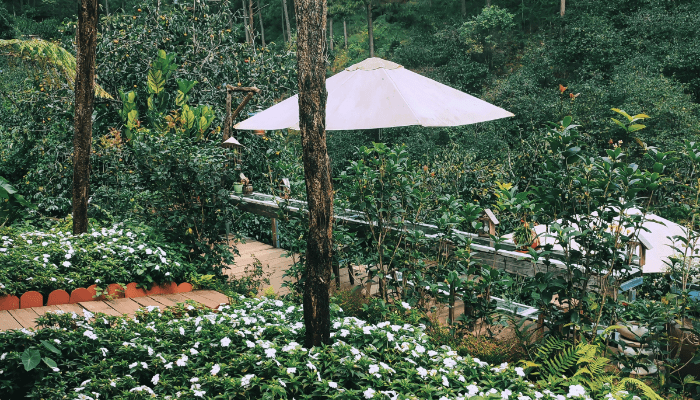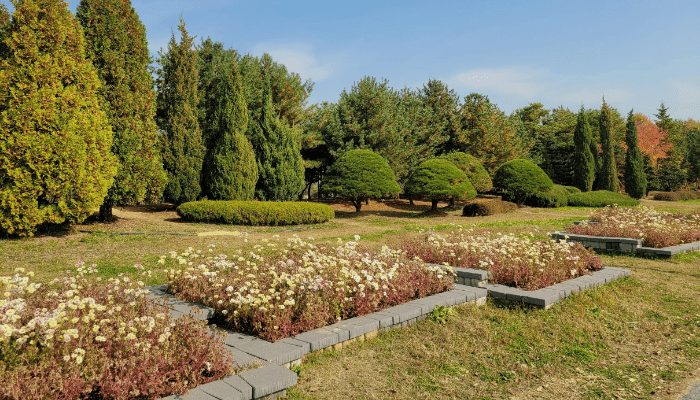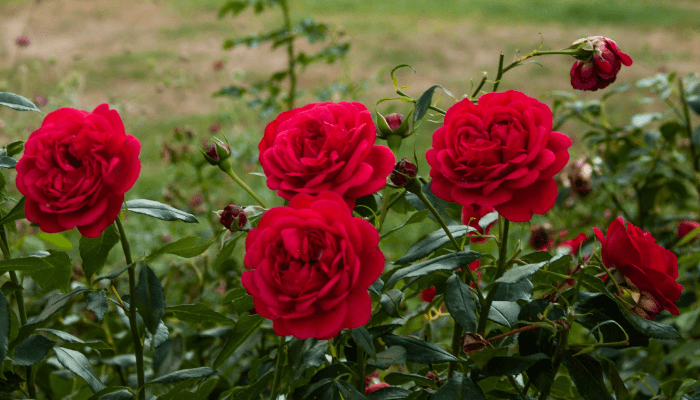Key Takeaways
Raised gardens are high‑yield and practical. They can produce up to twice the food per square foot while solving problems like poor soil, weeds, and back strain.
Multiple materials and styles fit your space. Wood, metal, composite, or stone. Each has pros and cons for durability, looks, and cost.
Plan placement carefully. Choose sunny, level spots with easy water access; keep beds under 4 ft wide and 6-18 in deep.
Use quality soil. A mix of compost, peat/coir, and vermiculite creates loose, fertile ground that plants thrive in.
Start simple. Greens, beans, and herbs are great first crops. Add root vegetables if you build deeper beds.
Maintain with light effort. Regular watering, compost top‑ups, and mulching keep beds productive for years.
DIY or buy, just get started. Kits, lumber, or creative upcycling all work. The key is building up, not struggling in bad ground.

Raised gardens aren’t just a Pinterest trend or a neat way to frame some lettuce. They’re practical. Strategic. In many cases, it is necessary. If you’ve ever dealt with bad soil, relentless weeds, or the joyless ache of bending over rows for hours. You’re exactly the kind of person who should be building up, not down.
Plus, they look good. Let’s not pretend that tidy cedar frames and lush green rows don’t satisfy some deep, primal craving for order. Raised beds give you more control, better drainage, longer growing seasons, and if you build them right, less work in the long run. That’s a win-win-win, and a bonus win for your knees.
This guide walks you through exactly how to plan, build, fill, and thrive with raised gardens, whether you’ve got a tiny patio or a quarter-acre. We’ll cut through the fluff, break down the materials, and avoid anything that sounds like a tool manual from 1996.
Let’s raise your garden game.

What Is a Raised Garden (And Why Use One)?
A raised garden, sometimes called a raised bed, is basically a framed box of soil that sits above ground level. That’s it. No high-tech wizardry, no secret handshake. Just smarter growing, lifted up a bit.
Why bother? Because soil on the ground is often trash. Too sandy. Too heavy. Too full of rocks or bugs or roots from some long-dead maple tree. Raised beds let you skip all that drama and grow in soil you control.
They’re also easier on your body. You can sit, kneel, or even build them high enough to stand. Less bending = happier gardening = less ibuprofen.

Raised Garden Bed Types
Not all raised beds are created equal. Here’s what you’re working with:
Wooden Beds
- Cedar and redwood are the classics, naturally rot-resistant and great-looking.
- Pine’s cheaper, but won’t last more than a few seasons unless you treat it (and no, pressure-treated wood doesn’t belong next to your food).
- Great for DIYers. Easy to cut, stack, screw together.
Metal Beds
- Sleek and modern. Galvanized steel won’t rot, and it handles weather like a champ.
- Can heat up in full sun, good for early season warmth, not great if you live in Death Valley.
- Longer lifespan than most wood.
Plastic & Composite Beds
- Lightweight, rot-proof, and often snap-together.
- Ideal for folks who want a clean, quick setup.
- Some look a bit… plasticky. But others mimic wood nicely.
Stone or Block Beds
- The tank of raised beds. Permanent. Heavy. Pricey. Worth it if you never want to rebuild.
- Retains heat well, looks high-end, but a pain to move once placed.
DIY Beds
- Pallets, stock tanks, concrete blocks, old dresser drawers, you name it.
- Just make sure it’s food-safe and drains well.
Pro tip: Think beyond the rectangle. L-shaped, U-shaped, tiered beds – your space, your rules.

Planning Your Raised Garden
Planning is everything. A badly placed raised bed is just an expensive box full of regret.
Location
- Sunlight: 6-8 hours minimum, or your tomatoes will mutiny.
- Water access: If it takes five trips with a watering can, you’ll stop watering.
- Level ground is best, but slight slopes can be leveled with a shovel and stubbornness.
Size
- Width: Stick to 4 feet or less, you need to reach the center without playing Twister.
- Length: As long as your space allows, but 4×8 feet is the gold standard.
- Depth: 6 inches works for shallow-rooted stuff. Go 12-18 inches for carrots, beets, and show-off root systems.
Pathways
- Leave at least 18-24 inches between beds.
- Enough to walk, wheelbarrow, or crouch without stepping into the soil you just fluffed.
Sketch your layout before you build. Even a napkin diagram will save you time.
How to Build a Raised Bed (Step-by-Step)
Here’s your no-nonsense build guide:
- Measure your space. Seriously, go outside with a tape measure. Guessing leads to cursing.
- Cut your lumber (or grab your kit).
- Assemble the frame. Use deck screws, not nails, they hold better.
- Level the ground. You want the bed to sit flat so water doesn’t pool in weird spots.
- Line the bottom with hardware cloth if you’ve got gophers. Otherwise, a layer of cardboard will suppress weeds and decompose naturally.
- Fill with soil mix (we’ll get to that next).
- Water it down. Let the soil settle before planting.
Optional: Add corner caps, trellises, or brag-worthy custom finishes. You do you.
Best Soil Mix for Raised Beds
You’re not growing in the ground, so you need to bring the good stuff in.
Here’s the classic blend (known as “Mel’s Mix” from square-foot gardening fame):
- 1/3 compost (from multiple sources if possible)
- 1/3 peat moss or coco coir (holds moisture)
- 1/3 vermiculite or perlite (adds air and drainage)
This combo drains well, holds water, and feeds your plants. It’s also light, which roots love.
Avoid filling with topsoil alone, it compacts and turns into a concrete slab by July.
Replenish compost every season. It’s the secret sauce.

What to Grow in Raised Gardens
You can grow just about anything in a raised bed, but some crops are practically designed for it.
Easiest Veggies to Start With
- Leafy greens (lettuce, spinach, chard)
- Bush beans
- Peas
- Radishes
- Herbs (basil, thyme, parsley, mint, though keep mint in its own container unless you like chaos)
Deeper Beds? Try These
- Carrots
- Beets
- Onions
- Garlic
- Potatoes (use a deeper or tiered setup)
Climbers & Trellis-Lovers
- Tomatoes
- Cucumbers
- Pole beans
- Peas
Add a trellis or support to save space and avoid tangled vines.
Avoid If…
- You’re limited on space? Skip corn, pumpkins, or full-size melons.
- You don’t want to build deep? Root veggies and spuds need room to stretch.

Raised Bed Maintenance Tips
This isn’t a set-it-and-forget-it situation, but it’s pretty close.
- Water deeply: Beds dry out faster, especially in heat. Use a drip system if you hate daily watering.
- Add compost each season: Even a 1-inch layer makes a big difference.
- Mulch: Keeps weeds down and moisture in. Straw, wood chips, or even shredded leaves.
- Rotate crops: Don’t grow tomatoes in the same spot every year. Your soil needs variety too.
- Check drainage: If water pools, dig down and loosen the compacted zone.
Don’t forget to just look at your plants. They’ll tell you when something’s off.
Common Mistakes to Avoid
Let’s save you from a few classic rookie errors:
- Too wide = can’t reach the middle.
- Too shallow = weak roots, poor yield.
- Bad soil = bad results. Don’t cheap out on the stuff that matters.
- Zero plan = zero success. Know what you’re planting and when.
- Ignoring the sun. Shade is the silent harvest killer.
And please, for the love of your knees, put it somewhere accessible. You’ll thank yourself in August.

Where to Buy or Build Raised Beds
Buy Kits Online
- Epic Gardening: Sleek metal beds in various sizes.
- Eartheasy: Wooden kits, sustainably sourced.
- Gardener’s Supply Co: Plastic, modular, and elevated options.
Local Options
- Hardware stores like Lowe’s or Home Depot.
- Local lumber yards, sometimes cheaper and higher quality wood.
DIY It
- Pallets, cinder blocks, scrap wood, stock tanks, all fair game.
- Just avoid chemically treated wood or anything with lead-based paint.
Custom is great. But don’t let “perfect” get in the way of “done.”
Conclusion
Raised gardens aren’t just for show, they’re the cheat code for smarter, more productive growing.
You get better yields. Fewer weeds. Fewer pests. And if you’re smart about setup, you get all that with less time spent fighting your own yard. It’s not magic, it’s just good design.
You don’t need a huge yard. You don’t need a table saw or an engineering degree. Just a few boards, the right soil mix, and a plan that fits your space. Start with one bed. See how it feels. You’ll be surprised by how much you can grow in just 4×8 feet, and how much easier it all gets when you’re not stuck digging in subpar dirt.
Whether you’re growing your first salad garden or scaling up to feed the block, raised beds give you the control to do it better.
So go build a box, fill it right, and plant something that’s going to make dinner taste better.
FAQ
What are the disadvantages of raised beds?
Raised beds can dry out faster, require more upfront cost, and may need more frequent watering. They also demand extra soil and materials, and over time, the sides may degrade. For large-scale gardening, they might not be the most efficient or cost-effective solution.
What is considered a raised garden?
A raised garden is a planting area elevated above ground level, usually enclosed by wood, stone, or metal. It contains soil that’s separate from the native ground, offering better drainage, easier access, and improved control over soil quality and plant health.
What do you put in the bottom of a raised garden bed?
The bottom of a raised garden bed can be layered with cardboard, newspaper, or landscape fabric to suppress weeds. Below the soil, you can also add coarse organic material like sticks, leaves, or straw to improve drainage and promote decomposition.
What is the point of a raised garden?
Raised gardens improve soil drainage, reduce weed growth, and make gardening more accessible by reducing the need to bend over. They also allow for better soil control and can extend the growing season due to faster soil warming in spring.



